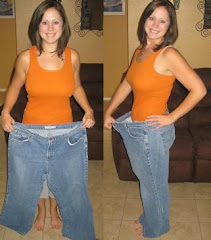Websters Definition of "POUND": any of various units of mass and weight; specifically : a unit now in general use among English-speaking peoples equal to 16 avoirdupois ounces or 7000 grains or 0.4536 kilogram.
What does a pound look like? Here is a visual.
Of coarse I'm getting a head of myself.
FIRST lets understand how we know what our body needs, what does "3500 extra" calories mean exactly if you don't know what your starting point is. Think of our bodies like a car. A car needs gas to go, well so do our bodies. Just like you can chose unleaded, leaded, premium, and even racing fuel, our bodies too need a good fuel source for optimum performance. Your tank in your car has a capacity, like mine has a 22 gallon tank. So how much fuel does your body need? This is called your BMR or Basic Metabolic Rate, which is the amount of calories your body needs to perform basic body functions if you were lying around all day. Most of us don't lie around all day, but many of us have sedentary lifestyles, like me I sit at a desk all day.
To calculate your BMR click HERE. After you figure out your BMR, you have to factor in your activity level, most people are sedentary to lightly active. Click HERE to calculate using the Harris Benedict Equation.
Using both these equations my BMR is 1950 calories. If I was not trying to lose weight, this would be my daily calorie need to support basic body functions and a lightly active lifestyle. By going over this on a daily basis by 500 calories per day and not exercising I would gain one pound one week (500 x 7 = 3500 = 1 pound - also this is theoretically, there are always other factors). Vice versa, to lose 1 pound per week I would need to reduce my calories by 500 per day. This can be accomplished by both reducing calories and through exercise. If I were to burn 250 calories per day through exercise, and reduce my calories 250 per day under my BMR, I would theoretically lose 1 pound that week. This theory I can say is pretty accurate, and worked for me. It is recommended by health professionals you aim for no more than 2lbs per week weight loss to safely lose weight, unless you are being supervised by a doctor. BUT there are benefits to losing weight slowly. It helps your allow your skin time to shrink so you don't have droopey hanging skin, those who lose weight slowly are more likely to keep the weight off, and it increases the chance of it being fat you are losing - not muscle. If you aim to lose 2lbs per week, then you have to "burn" 7000 calories per week through diet and exercise - by reducing your calorie intake by 500 below your BMR and burning 500 calories per day, this can theoretically be achieved.
To better illustrate how we create calorie deficits and achieve weight loss by increasing activity and decreasing calories is a calorie deficit. A calorie deficit is: the amount by which you have gone under you BMR creating the deficit which ultimatley leaves to weight loss.
To figure out your calorie deficit use this equation:
BMR + Calories Burned - Calories Consumed = Calorie Deficit
Example My BMR is 1950 (that is how much my body burns sedentary) + Calories Burned in Zumba (per my HR Monitor) 600 calories - 1200 calories consumed = A deficit of 1,350. If I repeated this 5 times per week I would theoretically be close to my goal of losing 2lbs per week becuase I created a weekly deficit of about 7000 calories (aka 2 pounds)
I know this can be over your head at first, it took me a while to grasp the concept. Understanding the weight loss game was nothing more than a math equation though really took a lot of the guess work out of it. By understanding all I had to do was burn calories and consume less and lose weight well the flood gates just opened.
Something fun I came accross since we're talking about pounds is this list that compares physical items to weight. Its so funny to see once you get losing weight, or even if your just setting out to lose weight how much you plan to get rid of compares to. I've lost an Irish Setter and a Chihuahua, what have you lost or do you hope to lose?
1 pound = a Guinea Pig
1.5 pounds = a dozen Krispy Kreme glazed donuts
2 pounds = a rack of baby back ribs
3 pounds = an average human brain
4 pounds = an ostrich egg
5 pounds = a Chihuahua
6 pounds = a human’s skin
7.5 pounds = an average newborn
8 pounds = a human head
10 pounds= chemical additives an American consumes each year
11 pounds = an average housecat
12 pounds = a Bald Eagle
15 pounds = 10 dozen large eggs
16 pounds = a sperm whale’s brain
20 pounds = an automobile tire
23 pounds = amount of pizza an average American eats in a year
24 pounds = a 3-gallon tub of super premium ice cream
25 pounds = an average 2 year old
30 pounds = amount of cheese an average American eats in a year
33 pounds = a cinder block
36 pounds = a mid-size microwave
40 pounds = a 5-gallon bottle of water or an average human leg
44 pounds = an elephant’s heart
50 pounds = a small bale of hay
55 pounds = a 5000 BTU air conditioner
60 pounds = an elephant’s penis (yep, weights more than his heart!)
66 pounds = fats and oils an average American eats in a year
70 pounds = an Irish Setter
77 pounds = a gold brick
80 pounds = the World’s Largest Ball of Tape
90 pounds = a newborn calf
100 pounds = a 2 month old horse
111 pounds = red meat an average American eats in a year
117 pounds = an average fashion model (and she’s 5’11”)
118 pounds = the complete Encyclopedia Britannica
120 pounds = amount of trash you throw away in a month
130 pounds = a newborn giraffe
138 pounds = potatoes an average American eats in a year
140 pounds = refined sugar an average American eats in a year
144 pounds = an average adult woman (and she’s 5’4”)
150 pounds = the complete Oxford English Dictionary
187 pounds = an average adult man
200 pounds = 2 Bloodhounds
235 pounds = Arnold Schwarzenegger
300 pounds = an average football lineman
400 pounds = a Welsh pony











No comments:
Post a Comment